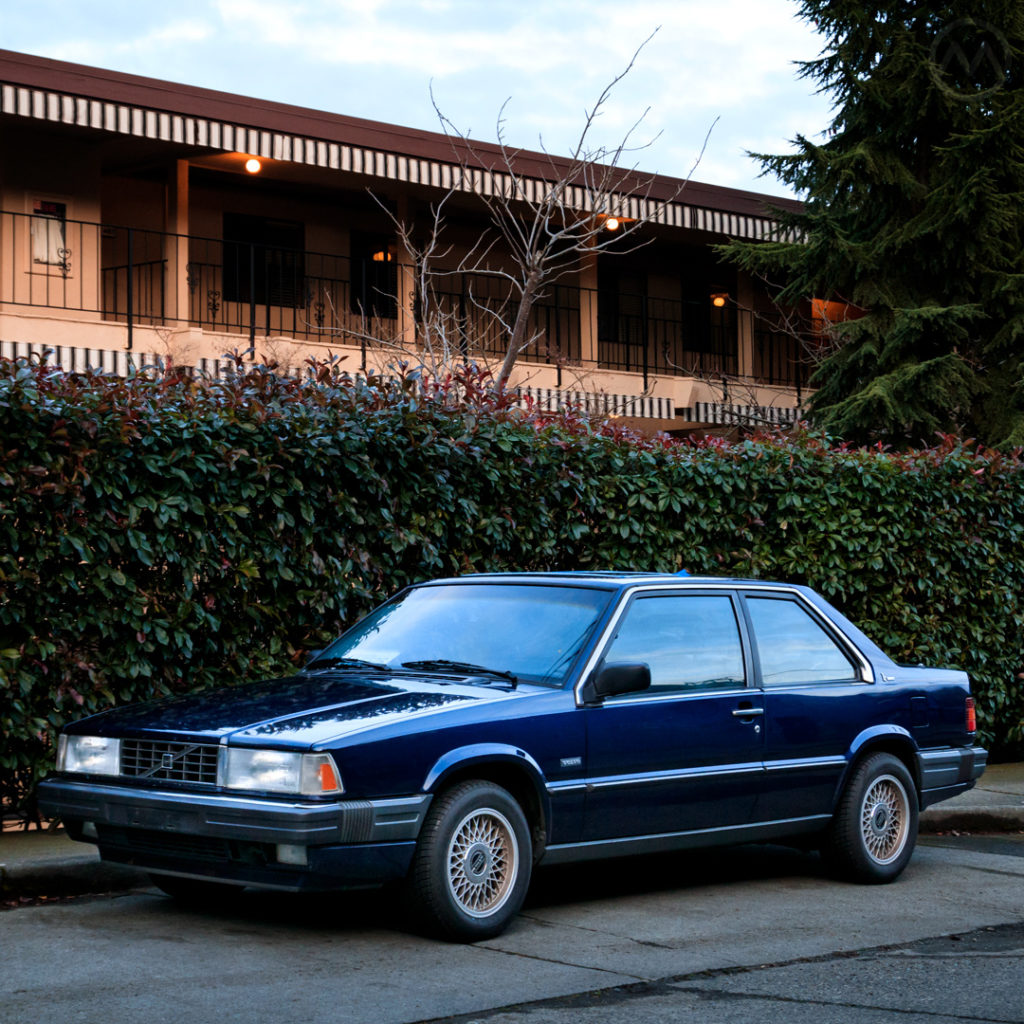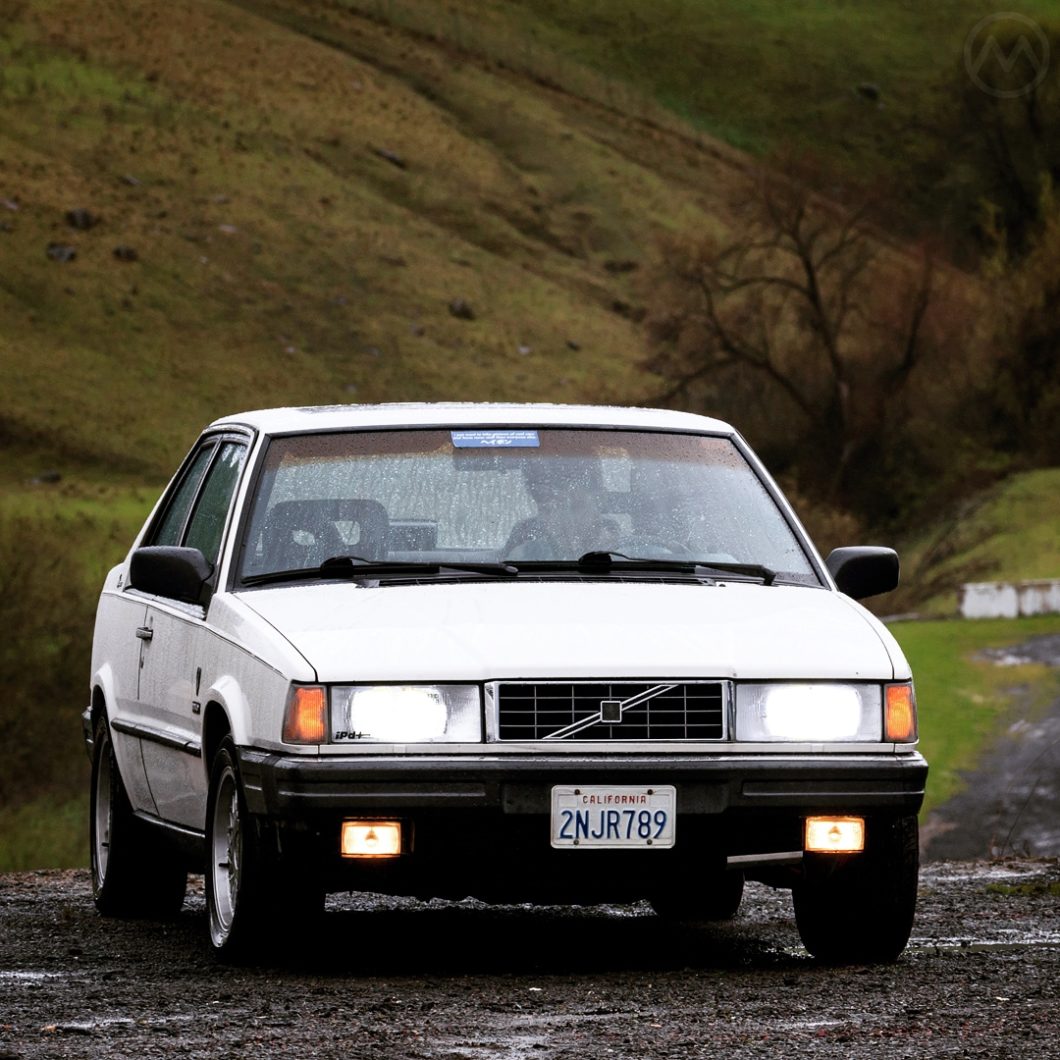At the time of Volvo’s first collaboration with Bertone in 1976, Volvos were still distinctly middle-class cars. By 1991, they were “premium” machines, at least in the U.S. At the very top of the line in that recessionary year was the Volvo Coupe (called the 780 Bertone for most of its life), a nearly $42,000 eighties wedge in its last days.
The first Bertone-bodied production Volvo was 1976’s 264 TE, a stretch limo that became primarily associated with ferrying around East German Bureaucrats. The second was the considerably more high-profile 262C in 1977; an unlikely Italo-Swedish lead sled inspired by – of all things – the Lincoln MkVI.
A chop-top pimpmobile fit for a king, the plush, exclusive 262C sold in small numbers even compared to the modest-selling regular 260s. But it proved Göteborg could build a de facto luxury car, since the 164 sedan was now almost decade into the history books and the regular 260s were also-rans.
Although built by Bertone, who also made the stampings unique to the car, the 262C was styled at home by Jan Wilsgaard, and not everybody was keen on its chop-top looks. 6,622 of the cars were made (75% of them coming stateside) until production ended in 1981.
In the meantime, Volvo had worked assiduously on a more distinctive premium sedan – the 700-series.
Thanks to economic circumstances abroad and the financial costs of absorbing DAF, the 700 took almost seven years to develop and finally emerged as the 760 in early 1982. At various stages in that project, two other Italian design houses – Coggiola and ItalDesign – were involved in potentially styling the basic package, though in typical Volvo tradition it was done in-house.
However, it was on this chassis, Bertone would create a third Volvo collaboration – this time styling the car itself – the 780.
Back to Bertone
The protracted development of the 700-series and the financial problems Volvo went through during those years eventually led its engineers to nickname it “Project 1155” – as in “five minutes to midnight,” as if doomsday loomed.
After the second OPEC crisis, Volvo didn’t think large 2-door cars had much of a future in its lineup, but as the 700 neared production and the 262C faded away, so did memories of the crisis. In the summer of 1981 Volvo returned to Bertone to talk about a successor.
The original proposal was similar to the 262C, just on the modern 700-series. Nuccio Bertone wasn’t a fan of that idea, and so Bertone cooked up its own, much sleeker proposal. Wilsgaard’s second proposal used a much more formal roof than Bertone’s.
In the end, much of Bertone’s proposal made it to production, with a compromise reached on the greenhouse – more upright than Bertone’s, less vertical than Wilsgaard’s.
Interestingly, Wilgaard’s second proposal also included a sloped front end not dissimilar to the 1979-85 Ford Mustang. Bertone’s early sketches for “Project 1781” had a rear end vaguely similar to that of the 1982 Ford EXP. Neither of these treatments made it to production, however.
It reflected the regular 700-series perfectly in a low-slung interpretation of the shape. Unlike the 262C, the 780 actually shared no panels with the regular 740/760 sedans and wagons. In another break from the 260-series, the 780 was also the only 2-door version of the basic 700 design.
Outside, the rakish coupe bore some resemblance to a Maserati Biturbo; but crisper and more delicate. It was lower than the other 700s and looked it. A subtle Bertone badge adorned the C-pillar.
The interior, all leather and wood and angles, was more directly lifted from the sedans but with plusher trimmings. It seemed to borrow a little from another Maser – the sumptuous Quattroporte III/Royale.
The 780 Arrives
The finished product did not debut until March of 1985 at the Geneva show. It took awhile to tool up for the car, which was built at Grugliasco in Turin, not Sweden. According to engineer Paolo Caccamo, about 80% of the car was shipped in essentially complete-knock-down form, but almost all the parts you could see any almost everything above the axles was designed and built by Bertone.

The modern facility at Grugliasco could build up to 30 of the cars a day, but since so much hand labor was involved, it rarely met that capacity. Much later (in 2009), the facility was sold to FCA and today builds the Maserati Ghibli and Quattroporte.
Many steps were taken by both partners, including a 200,000 square foot extension of the factory, to ensure that the cars would be up to Volvo’s quality standards. That was something that could not always be said of some of Bertone’s other in-house builds, like the contemporary X1/9.
Unsurprisingly, These semi-bespoke cars were the most expensive Volvos ever when new. They were priced higher than a BMW 5-series, a cool $34,785 base, when they finally reached the United States in 1987.
Style or Speed?
The car had gone on sale a year earlier in Europe – primarily in Italy. It was first powered by the unusual VW-based D24TIC turbodiesel – not exactly a supercar powerplant. 1987 would bring more engines to the European market – the B200ET Turbo four and versions of the PRV V6.
Europe and North America got slightly different PRVs in the car, but in North America it was launched only with the 145-hp B280F PRV which, while improved over earlier PRVs, still wasn’t a powerhouse. It was mated exclusively to a 4-speed automatic.
Originally a smaller but more highly tuned turbocharged PRV used by Alpine was considered. Unfortunately, it wouldn’t fit under the lower hood line of the coupe.
As such, the expensive, 3,300-lb. coupe wasn’t as fast as its looks suggested. But it did come loaded with luxury features. Leather and wood, Alloy wheels, climate control, power steering, heated power seats, a sunroof, cruise control? All were standard.
Volvo was also fairly quick to improve the car. In 1988, a redesigned rear suspension improved the handling. In 1989, the 175 hp 2.3L B230ET Turbo four was added, though in North America all cars remained automatics.
Europeans, who preferred to shift for themselves, could get a manual, and it later became a popular swap for U.S. spec cars.
A Rarified Item
Even with the Turbo the cars were not as fast as BMW’s E24 coupes (which disappeared around the time the Turbo went on sale in the U.S.), but they were fairly quick for a 3,400 lb. 1980s coupe with family car mechanicals.
The main obstacle to selling more of them was price – the 780 was very expensive new and seemed to get more expensive as time went on. By this time the other 700-series cars were considered by the public to be de facto luxury cars comparable with BMWs. The 780’s price, however, was perhaps a bridge too far for some.
In Europe Volvo’s 400 series was much more middle class, but in America even the old 200 had become a fairly expensive item with a distinctly “professional class” clientele. The need for a halo car diminished but the model ran for five years.
In 1991, the 780 badging was dropped in favor of just “Volvo Coupe,” but a sharp headwind of recession greatly damaged sales of pricey European imports in 1990-91. That ultimately led production to wind down. Just 400 of the cars were to be available for U.S. customers in 1991.
8,518 780s were built over the five-and-a-half year run, with a large majority of the coming to North America (5,695). Like the other 700-series Volvos, they were capable of huge mileages and generally trouble free. 780-specific parts, however, could (and can) be hard to find owing to their rarity.
Volvo didn’t replace the 780 (though Volvo trucks did recycle the name) until the C70 in 1997. That 850-based car, designed in collaboration with Tom Walkinshaw Racing, was a considerably more mainstream (and less expensive) kind of coupe.

